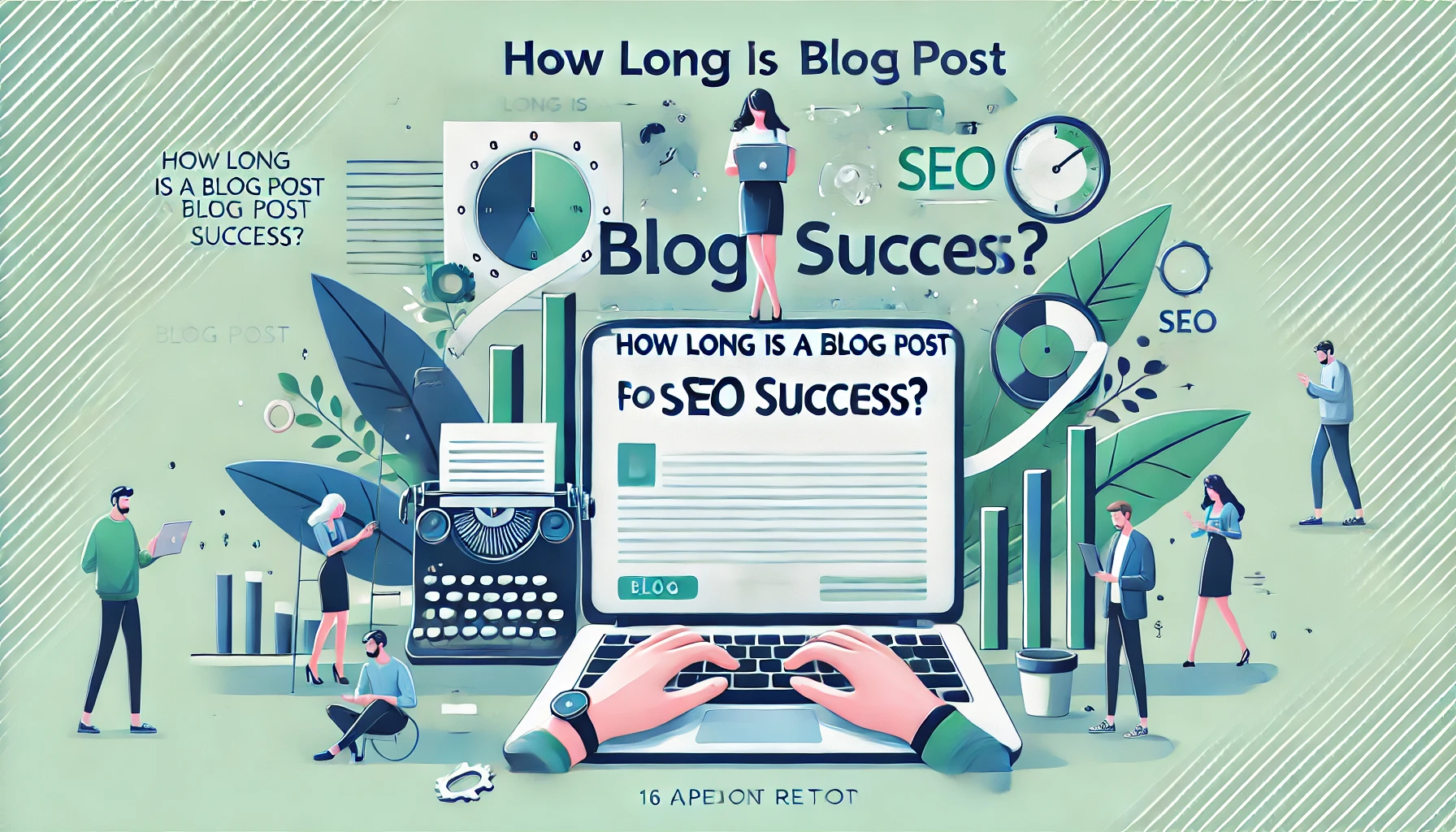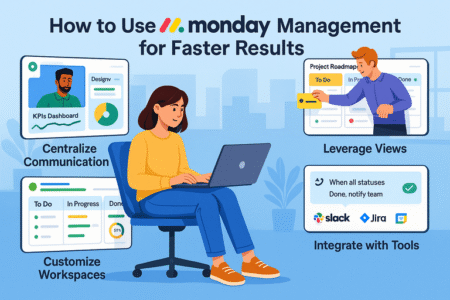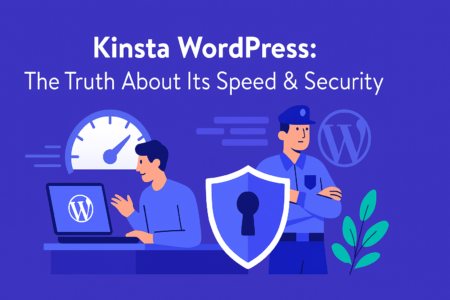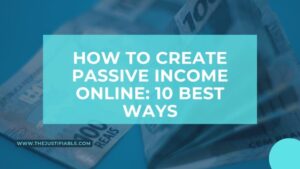Table of Contents
How long is a blog post ideal for SEO success? Does the length of your blog posts really matter in driving organic traffic and engagement?
In this article, we’ll explore the answers to these critical questions and guide you through crafting the perfect blog post length for SEO performance.
Ideal Blog Post Length For SEO Optimization
Determining the ideal blog post length for SEO success requires balancing keyword optimization, reader satisfaction, and Google’s ranking criteria. Let’s explore how you can tailor your blog posts for maximum visibility and engagement on search engines.
How Long Is a Blog Post for Top Google Rankings?
Blog posts ranking high on Google often have 1,500 to 2,500 words, as this length allows for comprehensive coverage. However, it’s essential to consider the topic complexity and reader expectations to ensure content remains engaging and relevant throughout.
Longer content typically provides more opportunities to include keywords, address user intent, and incorporate backlinks. But remember, the focus should be on creating valuable, informative content that genuinely addresses the reader’s needs. Write naturally and avoid padding content with fluff.
I recommend assessing your audience’s preferences by checking their engagement on previous posts. If readers engage more with detailed content, prioritize long-form posts. On the other hand, concise topics may require shorter posts to hold attention effectively.
Understanding Word Count and SEO Impact
Word count affects SEO because it can influence time-on-page metrics, keyword integration, and perceived authority. Longer posts often outrank shorter ones, but only if the content adds real value to the reader’s experience.
SEO-friendly posts should incorporate the primary keyword naturally while maintaining readability. For instance, when answering “how long is a blog post,” expand on specific scenarios rather than repeating generic advice. Use subheadings, bullet points, and short paragraphs for clarity.
While I believe structure is vital, don’t let word count be your sole focus. Instead, evaluate what the topic demands. Some questions might require in-depth answers, while others are resolved with brevity and precision.
Balancing Reader Engagement and SEO Goals
Creating blog posts that are both engaging and optimized for SEO means finding the sweet spot between detail and digestibility. Readers stay longer on content that answers their questions clearly and thoroughly, signaling value to search engines.
Use storytelling or relatable examples to connect with your audience. For instance, share an anecdote about how a well-researched long-form post doubled your traffic. This approach not only informs but also builds trust and relatability.
If you’re writing for SEO, prioritize scannability. Subheadings, lists, and visuals help break down complex topics, improving user experience. I advise keeping your audience’s time constraints in mind to keep them engaged.
Why Quality Content Matters More Than Length
The quality of a blog post often outweighs its word count in SEO success. High-ranking posts are comprehensive but concise, delivering actionable insights without overwhelming readers. Keyword placement and value addition remain the cornerstones of effective content.
Focus on answering the reader’s intent thoroughly. For example, instead of fixating on “how long is a blog post,” explore related aspects like types of content, expected outcomes, and potential pitfalls. This approach ensures relevance and depth.
I suggest prioritizing depth over superficial length. Invest time in researching, using credible sources, and presenting fresh perspectives. Ultimately, Google values content that helps users solve problems over word count.
Factors Influencing Blog Post Length for SEO

Several factors determine the ideal length for your blog posts, including your audience, industry standards, and search intent. Let’s dive into these critical elements to better tailor your content for SEO success.
Target Audience and Their Content Preferences
Understanding your audience is the foundation of deciding blog post length. Readers in some niches prefer concise answers, while others value detailed, long-form content. Learn what resonates by analyzing user feedback and interaction patterns.
For example, a tech-savvy audience might expect thorough product comparisons, requiring more words. On the other hand, a lifestyle audience might lean toward quick, digestible tips. Craft posts that cater to these expectations without diluting the quality.
I advise starting with surveys or analyzing analytics data to uncover preferences. This approach helps you craft content that feels tailor-made for your audience, increasing both engagement and retention.
Industry and Niche-Specific Word Counts
Different industries have varying standards for blog post lengths. In-depth fields like finance or technology often demand longer posts to explain complex concepts, while entertainment or fashion can succeed with shorter, visually rich posts.
For instance, a “how-to” guide in the fitness niche may require 2,000 words, including step-by-step instructions. Conversely, a news article about a fashion trend could be impactful in 500–800 words. Tailor your content accordingly.
By staying informed about trends in your industry, you’ll better understand what works. I recommend using tools like BuzzSumo to explore high-performing content in your niche for inspiration.
Competitor Analysis to Determine Length
Analyzing competitors is a smart way to gauge the ideal word count for your blog posts. Observe the length of top-ranking posts on similar topics to set benchmarks and identify gaps in their coverage.
For example, if competing blogs average 1,500 words but miss practical examples, you can create a 2,000-word post filled with actionable advice. This strategy helps you stand out while addressing the primary keyword effectively.
Remember, the goal isn’t to copy but to outperform. I suggest incorporating unique perspectives, updated information, and better readability to surpass competitors in both quality and SEO value.
Search Intent and Content Relevance
Search intent determines the depth required in a blog post. Informational queries often call for longer content, while transactional or navigational intents might require concise, to-the-point answers to meet user expectations.
For example, someone searching “how long is a blog post” likely seeks guidance on word count, formatting, and SEO practices. Answering all these aspects thoroughly ensures your post aligns with the intent.
I believe that understanding intent is key to building reader trust. Use tools like People Also Ask or related searches to refine your content’s relevance. Providing meaningful answers increases your blog’s chances of ranking well.
Recommended Word Counts for Different Blog Types
The length of a blog post varies depending on its type and purpose. Tailoring your blog post’s word count to its specific type ensures better reader engagement and aligns with SEO requirements. Here’s a breakdown for popular blog formats.
How Long Should Evergreen Blog Posts Be?
Evergreen blog posts often range between 2,000 and 3,000 words. This length allows for in-depth coverage of timeless topics that remain relevant to readers over time, such as “how-to” guides, resource compilations, and insightful analyses.
Evergreen content benefits from being comprehensive, as it needs to address multiple facets of a topic to maintain long-term value. I recommend breaking down complex subjects into clear sections with actionable tips to hold the reader’s attention.
While writing evergreen content, think about the questions your audience might have months or years later. Include examples, visuals, and reliable data sources to enhance the longevity and credibility of your post.
Make sure your evergreen post is updated periodically to retain relevance. Adding recent developments or trends helps maintain its position on search rankings and improves its overall usefulness.
Optimal Length for Listicles and Guides
Listicles and guides perform well when they are concise yet informative, typically spanning 1,500 to 2,000 words. This format is ideal for delivering actionable insights or curated lists that readers can quickly consume and apply.
A well-crafted listicle provides clarity and ease of navigation. For example, a post titled “10 Steps to Boost Website Traffic” should give practical tips while staying straight to the point. Use subheadings for each list item to improve readability.
I suggest including 8–12 items in your listicle to strike the right balance between value and brevity. If the topic warrants more items, divide the content into sections or create a series to avoid overwhelming readers.
For guides, structure your content step-by-step to guide the reader logically. Include visuals, examples, and actionable steps that reinforce your points, making the post both educational and engaging.
Crafting Engaging Short-Form Content
Short-form content, generally 600–1,000 words, works best for answering specific questions or providing quick updates. This format suits blogs targeting niche audiences with focused topics that don’t require exhaustive detail.
Short-form blogs excel at holding the reader’s attention, especially for audiences who prefer concise content. Use punchy sentences and precise language to deliver value without unnecessary fluff.
I believe using bullet points or numbered lists can enhance the clarity of short-form posts. These features make it easier for readers to grasp the key takeaways quickly.
While brevity is essential, ensure the content feels complete. Address the main query thoroughly and include a clear call-to-action that encourages further interaction, such as exploring related topics or leaving comments.
Long-Form Blog Posts for Comprehensive Coverage
Long-form posts exceeding 3,000 words are ideal for tackling complex subjects, such as detailed tutorials, in-depth research articles, or industry trend analyses. These posts establish authority and encourage prolonged engagement.
Long-form content offers opportunities to explore multiple angles of a topic. For instance, a post on “SEO Strategies for Beginners” could include definitions, step-by-step instructions, and advanced tips for seasoned users.
I suggest using a table of contents for better navigation, especially in longer posts. This feature helps readers jump directly to sections they find most relevant, improving the overall user experience.
When writing long-form blogs, ensure you maintain a conversational tone to keep readers interested. Stories, examples, and visuals can make dense topics more digestible and relatable.
Best Practices for Crafting SEO-Friendly Blog Posts

Crafting an SEO-friendly blog post goes beyond word count. It involves strategic keyword use, user-friendly formatting, and content that aligns with search intent. Here’s how to create posts that perform well in search rankings and resonate with readers.
Start with Keyword Research for Blog Post Optimization
Keyword research is the foundation of effective SEO. Identifying the right keywords ensures your content aligns with what your audience is searching for, increasing visibility and traffic.
Use tools like Google Keyword Planner or SEMrush to find relevant terms. Focus on long-tail keywords to target specific queries and incorporate them naturally into your headings, subheadings, and content.
I suggest avoiding keyword stuffing. Instead, emphasize answering user intent. For example, when addressing “how long is a blog post,” provide detailed insights on various blog types and their ideal lengths to add real value.
By focusing on intent, your blog becomes more relevant and authoritative. This increases the likelihood of ranking higher and attracting engaged readers who find your content useful.
Structuring Content for Readability and SEO
Proper structure enhances the reader’s experience and improves your post’s SEO performance. Use clear headings, short paragraphs, and bullet points to make your content visually appealing and easy to digest.
I recommend starting with an attention-grabbing introduction that outlines the main topic. Break the content into sections with subheadings to ensure it flows logically. This keeps readers engaged and helps search engines understand your post’s focus.
Use transition phrases to guide readers through your content smoothly. For example, after explaining word count recommendations, transition into SEO techniques that complement those recommendations for a cohesive narrative.
Writing a Compelling Introduction and Conclusion
Your introduction sets the tone for the post and draws readers in. Begin with a question or statement that resonates with your audience, then explain what they can expect to learn by reading further.
In the conclusion, summarize the key takeaways and encourage action. I suggest ending with a question or call-to-action, such as inviting readers to share their experiences or explore related topics on your blog.
Keep both the introduction and conclusion concise but impactful. These sections frame your content and leave a lasting impression, making readers more likely to return or recommend your blog.
Importance of Internal and External Linking
Internal and external links enhance your blog’s authority and usability. Linking to related posts on your site encourages visitors to explore more content, boosting time-on-site metrics.
I advise using external links to reputable sources to support your claims and improve your content’s credibility. For example, citing studies or tools in an SEO-related post adds depth and trustworthiness.
Anchor text should be descriptive and relevant to the linked content. This not only helps readers but also signals to search engines that your post is connected to authoritative and related topics.
Measuring Success of Blog Post Length Strategies
Measuring the success of your blog post length is crucial for refining your content strategy. By leveraging tools and data insights, you can determine what works best for your audience and achieve better results for SEO.
Using Analytics to Monitor Reader Engagement
Analytics tools like Google Analytics can help track reader engagement by analyzing metrics such as time spent on a page, bounce rate, and scroll depth. These insights reveal how effectively your content captures and retains interest.
For instance, if users spend longer on blog posts with detailed sections, it indicates they value in-depth content. Conversely, high bounce rates might suggest that your content is too long or doesn’t match their expectations. I recommend experimenting with different lengths to see what keeps readers engaged.
Pay attention to user flow data. If readers frequently move from one section of your site to another, it’s a sign your internal linking and content strategy are on point. These details help you fine-tune your blog structure.
Tracking Organic Traffic Growth for Blog Posts
Organic traffic growth is a direct indicator of your blog post’s SEO performance. When content aligns with user intent and keywords, it drives more visitors from search engines over time, demonstrating the effectiveness of your word count strategy.
Monitor the search queries driving traffic to your posts. If specific keywords or phrases are bringing in readers, I suggest creating similar content to build on that momentum. Ensure these new posts complement your existing articles for better interlinking.
Observe trends over several months. Blogs typically gain traction over time, so steady growth suggests that your chosen length resonates with readers. I advise against making drastic changes to well-performing posts unless necessary.
Evaluating SEO Performance Over Time
SEO success isn’t instant, and evaluating performance over time provides a clearer picture of what works. Track metrics like keyword rankings, backlinks, and click-through rates (CTR) to assess the long-term impact of your blog post lengths.
For example, a longer blog post optimized for “how long is a blog post” may climb the rankings gradually. Regularly reviewing its performance helps identify when updates or new strategies are needed to maintain relevance.
I recommend setting milestones, such as improved rankings or traffic, to measure success effectively. Keeping an eye on competitors’ performance can also provide valuable insights into industry trends and opportunities.
Adjusting Content Strategy Based on Results
Your content strategy should evolve based on measurable results. If shorter posts consistently underperform, consider increasing their length or adding value through more examples, visuals, or data-driven insights.
Use A/B testing to compare different content formats and lengths. I believe this approach provides concrete evidence of what resonates most with your audience, helping you optimize future blog posts.
If specific posts drive more engagement, analyze their structure, tone, and depth to replicate that success. Regular audits of your content library ensure that every post contributes to your goals effectively.
Common Misconceptions About Blog Post Length

Many myths surround the ideal blog post length for SEO, often leading to misguided strategies. Debunking these misconceptions can help you focus on creating meaningful content that performs well.
Longer Blog Posts Always Rank Better
While longer blog posts often rank higher, it’s not the word count alone that guarantees success. Quality and relevance play a far more significant role in attracting both readers and search engines.
Long-form content should provide comprehensive answers to questions. If a blog post drifts into unnecessary detail, readers may lose interest. I suggest focusing on delivering value with every section, regardless of length.
For topics that don’t require extensive explanations, concise posts can perform just as well. Search engines prioritize content that fulfills user intent, so avoid padding your posts to meet arbitrary word count targets.
Short Blog Posts Have No SEO Value
Short blog posts can rank well when they effectively address specific queries. For example, a 600-word blog answering a single question might satisfy search intent better than a 2,000-word post with scattered information.
I recommend using concise posts for niche topics or targeted keywords. Pair them with internal links to longer content on related subjects for a more comprehensive user experience.
Remember, even short posts must be optimized for SEO. Include a clear structure, strategic keywords, and actionable advice to make them impactful and valuable to your audience.
Word Count Alone Determines SEO Success
Word count alone isn’t a magic formula for SEO success. Search engines evaluate content based on factors like readability, keyword usage, backlinks, and user engagement rather than just its length.
Instead of obsessing over numbers, focus on aligning your content with user intent. I suggest conducting regular audits of your blog posts to ensure they remain relevant, accurate, and competitive in search results.
Combining thoughtful word count with other optimization strategies, such as keyword placement and multimedia elements, creates a well-rounded approach that consistently delivers results.
Actionable Tips to Improve Blog Post Length
Improving blog post length involves more than adding words. It’s about making your content more engaging, relevant, and effective. Here are practical strategies to enhance your posts’ performance.
Testing and Iterating Blog Length for Performance
Experimenting with different blog lengths allows you to discover what resonates most with your audience. Test long-form and short-form content on similar topics to see which performs better in terms of engagement and traffic.
Use data from analytics tools to refine your strategy. If longer posts drive higher time-on-page metrics, consider creating detailed guides for similar topics. I advise maintaining flexibility and adapting based on reader behavior.
Test new formats occasionally. For example, turn a long blog into a shorter series or expand a brief post into a detailed guide. These iterations can breathe new life into existing content and attract diverse audiences.
Keeping Content Relevant and On-Topic
Relevance is key to retaining readers and boosting SEO. Each paragraph should directly contribute to the topic, avoiding tangents that dilute the message or reduce clarity.
I suggest outlining your blog before writing. This ensures that every section has a clear purpose and aligns with the main keyword. Address related questions within the post to provide comprehensive coverage.
Regular updates are essential for maintaining relevance. Refreshing older posts with current trends or data keeps them valuable and competitive, helping them maintain strong rankings over time.
Using Tools to Optimize Content for SEO
Tools like Yoast SEO and Rank Math can help fine-tune your content for better performance. These platforms provide recommendations on keyword usage, readability, and structure, ensuring your blog is both user- and search-engine-friendly.
I recommend leveraging these tools to identify gaps in optimization. For instance, if a blog isn’t ranking well, check for issues like missing headings, weak internal links, or excessive keyword usage.
Content optimization tools also help improve visual appeal. Adding images, charts, or infographics makes your blog more engaging, encouraging readers to stay longer and share your content.
Setting Clear Goals for Each Blog Post
Every blog post should have a specific goal, whether it’s to inform, persuade, or entertain. Defining this purpose before writing helps shape the tone, structure, and length of your content effectively.
For example, a post designed to educate might require a detailed approach, while an opinion piece could be more conversational and concise. I believe tailoring content to its purpose increases its impact and relevance.
Once your goal is clear, measure success based on metrics that align with it. Whether it’s traffic, conversions, or shares, tracking these outcomes helps refine your future content strategy.






